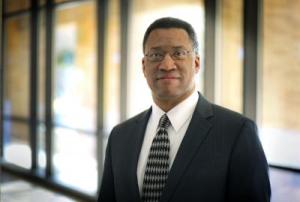Jan 23 2014
A UT Arlington engineering professor has proven that the effect of mass is important, can be measured and has a significant impact on any calculations and measurements at the sub-micrometer scale.
 This is a photo of University of Texas at Arlington Assistant Professor Alan Bowling.Credit: University of Texas at Arlington
This is a photo of University of Texas at Arlington Assistant Professor Alan Bowling.Credit: University of Texas at Arlington
The findings help to better understand movement of nano-sized objects in fluid environments that can be characterized by a low Reynolds number, which often occurs in biological systems. The unconventional results are consistent with Newton's Second Law of Motion, a well-established law of physics, and imply that mass should be included in the dynamic model of these nano-systems. The most widely accepted models omit mass at that scale.
Alan Bowling, an assistant professor of mechanical and aerospace engineering, collaborated with Samarendra Mohanty, an assistant physics professor, and doctoral students Mahdi Haghshenas-Jaryani, Bryan Black and Sarvenaz Ghaffari, as well as graduate student James Drake to make the discovery.
A key advantage of the new model is that it can be used to build computer simulations of nano-sized objects that have drastically reduced run times as compared to a conventional model based on Newton's second law. These conventional models have run times of days, weeks, months and years while the new model requires only seconds or minutes to run.
In the past, researchers attempted to address the long run time by omitting the mass terms in the model. This resulted in faster run times but, paradoxically, violated Newton's second law upon which the conventional model was based. The remedy for this paradox was to argue that mass was unimportant at the nano-scale.
However, the new model retains mass, and predicts unexpected motion of nano-sized objects in a fluid that has been experimentally observed. The new model also runs much faster than both the conventional and massless models.
It is expected that this new model will significantly accelerate research involving small-scale phenomena.
Research areas that Bowling and collaborators at UT Arlington are currently investigating include cell migration, protein function, bionic medical devices and nanoparticle suspensions for storing thermal energy. However, the applications for the computer simulation in medicine, biology, and other fields are endless.
The research is detailed in the paper "Dynamics of Microscopic Objects in Optical Tweezers: Experimental Determination of Underdamped Regime and Numerical Simulation using Multiscale Analysis" and published online by the Journal of Non-Linear Dynamics. The paper is scheduled for publication in the journal's print version later this year.
Khosrow Behbehani, dean of the College of Engineering, said the team's findings may alter ways of thinking throughout the engineering and scientific worlds.
"The paper is only the beginning for this research," Behbehani said. "I anticipate a high level of interest in the findings. It could transform the way we conduct research in nano-engineering by providing researchers with the ability to study such physical phenomena at such small scale through the model."
The team used optical tweezers previously developed by Mohanty to measure oscillations that occur at the nano scale, thus proving that mass and acceleration must be considered at that level as well.
"We proved it in the lab," Bowling said. "Publication in an accepted journal is the next step in gaining mass acceptance of the idea, which flies in the face of what most people believe now."